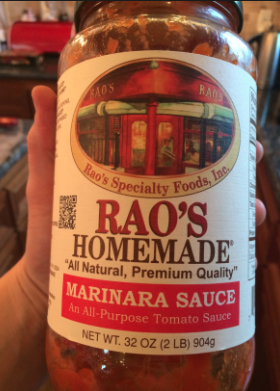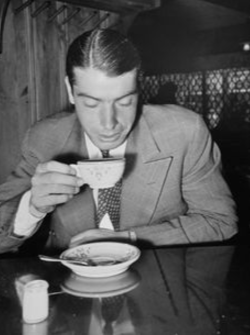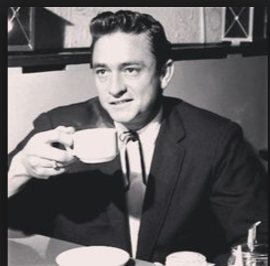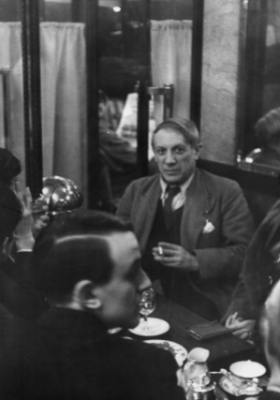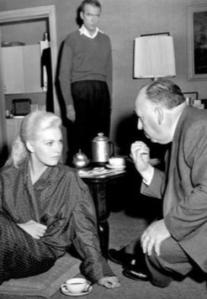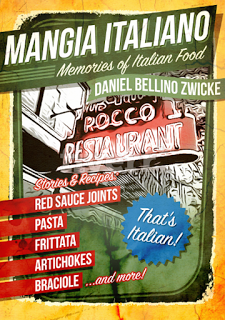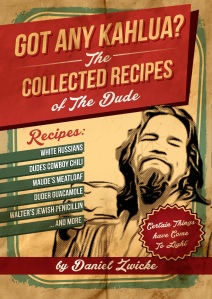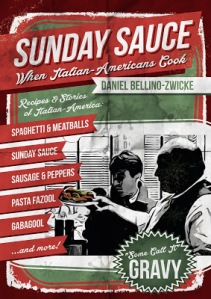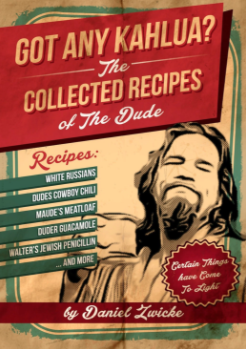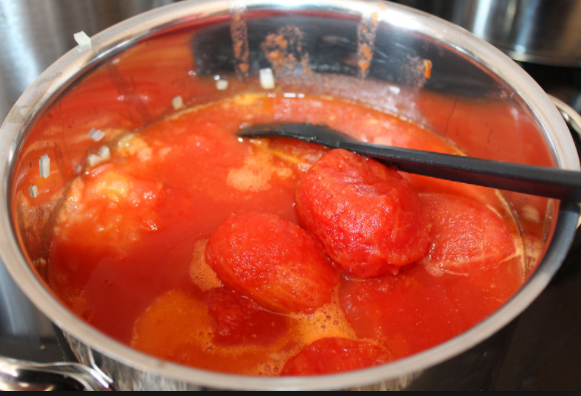
Celebrities Drinking Coffee

My Morning Coffee and Newspaper
The HISTORY of ITALIAN AMERICAN FOOD

Frank Sinatra in Mosaic
ITALIAN-AMERICAN FOOD ... A Brief History
Italian food is one of the most popular ethnic foods in America. In fact, it’s so popular that Italian food authorities have become concerned with what they call “Italian sounding” or “fake Italian food products.” According to one study, authentic Italian food -- that’s food imported from Italy -- accounts for only about one-third of Italian food purchased in the United States. The remainder is foods that have Italian names, but are not authentic Italian products. Authentic Italian food products are available at specialty food stores in the United States --most notably in Italian food markets in cities with large populations of Italian Americans. Italian food producers say that Italy’s high standards, the importance of freshness and the cost and time of exporting have limited authentic Italian food products in the American market. However, the Internet has narrowed the gap, as more Italian products become available online. Many say the trend toward Italian food started in the late nineteenth century as Italian immigrants began to make their homes in America. The waves of immigrants from Italy continued passing through Ellis Island, traveling further west, yet holding on to their cultural identity through their cooking. One of the earliest dishes attributed to an Italian, and still extremely popular today, is Chicken Tetrazzini. It was created in the early 1900s in honor of Luisa Tetrazzini, the operatic soprano known as The Florentine Nightingale. The famous muffuletta sandwich of New Orleans, named after the muffuliette rolls baked in Sicily, was created in 1906 for Sicilian workers. The ever popular Philly cheese steak was invented by an Italian, and the specialty fish stew of San Francisco, cioppino, originated from the Italian fish stew ciuppin, made by the Genoese fishermen who settled there. Soldiers returning from Italy after World War II brought with them their desire for the foods of a grateful but war-torn nation. Enterprising immigrants opened restaurants providing the soldiers with the foods they had developed a craving for and introduced the soldiers’ families to spaghetti and meatballs, sausage and peppers, ravioli, lasagna, manicotti, baked ziti and pizza. Throughout the 50s and 60s, Italian food was becoming a part of the American diet and delicatessens offered salami, capocollo, mortadella, pepperoni, mozzarella and provolone, while spumone was a popular dessert, and variations of minestrone abounded. During the 70s and 80s, many Italian-inspired regional dishes became popular in America -- Eggplant Parmigiana, Fettuccini Alfredo, Penne alla Vodka, Shrimp Scampi, Chicken Piccata, Chicken Cacciatore, Steak Pizzaiola, Osso Buco, Veal Marsala, Pasta Primavera, Fried Calamari, Saltimbocca, Caponata, Calzone and Stromboli. Grissini, semolina bread, risotto, broccoli rabe, arugula, radicchio, Gorgonzola, Parmigiano Reggiano, ricotta, olive oil, pesto, prosciutto, sun-dried tomatoes, pizzelle, cannoli, zeppole, torrone, gianduja, panettone and espresso were common additions to meals. The 90s heralded a mass influx of Italian ingredients and foods, with bocconcini, mozzarella di bufala, ricotta salata, fontina, Asiago, Taleggio, Grana Padano, Pecorino Romano, caciocavallo, mascarpone, ciabatta, crostini, bruschetta, focaccia, panzanella, polenta, gnocchi, pancetta, specialty pestos, black and white truffles, balsamic vinegar, extra virgin olive oil, dipping oils, pasta -- of all shapes, sizes, and colors, numerous pasta sauces, various types of pizza, cappuccino, flavored syrups, biscotti, tiramisù, granita and gelato. So far, the twenty-first century has brought more attention to frittata, timballo, panini, Insalata Caprese, Burrata, Arancini, homemade specialty pastas, flavored balsamic vinegars and oils, artisan breads and cheeses and, although not a food, but food related -- the barista.SUNDAY SAUCE
aka GRAVY
GREAT MOMENTS in ITALIAN FOOD HISTORY
1492 ... Christopher Columbus discovers the Americas .. Soon thereafter, foods like Potatoes (Gnocchi), Tomatoes (Sugo di Pomodoro), and Corn (Polenta) are exported from the New World to Italy.
1880s ... The first 5 Million Italian Immigrants arrive in America and eventuall invent one of the the World's Best Loved Cusines "Italian-American"
1889 ... Raffael Esposito invents Pizza Margherita in Naples, Italy honor of Queen Margherita ..
1891 ... Florentine baker Artusi Pelligrino writes the first modern Italian Cookbook .
1905 ... America's 1st ever Pizzeria, Lombardi's is opened by Genaro Lombardi on Spring Street in New York .. Lombardi's Pizzeria is till there, and is the 1st and oldest Pizzeria in the United States ..
1906 ... Barbetta Restorante opens in the Theater District in New York .. It's still open and run by the founders daughter Laura Maioglio ..
1908 ... John's of 12th Street opens on East 12th Street in the East Village .. Charles Lucky Luciano would whack (Murder) someone outside the restaurant one day.
1917 ... Alfredo di Lelio invents Fettuccine Alfredo at his restorante in Rome .. Mary Pickford and Douglas Fairbanks eat it on their honeymoon in 1926 and love it, and spread the word back in Hollywood, and the word spreads. Within a year, a recipe for Fettuccine Alfredo is in cookbooks in the States . Fettuccine Alfredo becomes one of America's favorite dishes and is a bug part of Italian-American cuisine and is served in Italian restaurants all over America, where millions of dishes of it have been enjoyed by enthusiastic customers over the years. The recipe created by di Lelio is made with fresh fettucine egg noodles and the sauce is made by tossing butter and grated Parmigiano Reggiano together with the just cooked pasta. Italian restaurant owners in America make it a bit differently and their devoted customers just love it. In Italian restaurants in America the same fresh fettuccine egg pasta is used, but the sauce is different, it's made of heavy-cream and the grated Parmigiano Reggiano instead of butter and Parmigiano, either way is equally tasty.
AMERICA'S GREATS OLD SCHOOL ITALIAN RESTAURANTS
RAO'S
East Harlem , NEW YORK
JOHN'S
EAST 12th STREET , NEW YORK NY
Original DECOR SINCE 1908
GINO'S
Lexington Avenue , New York , NY
"Sadly, has closed, but it was one of America's greatest Italian restaurants ever, so we just want to keeps its memory alive. Basta!"
..
.
.
Greenwich Village Italian
Outside MONTE'S TRATTORIA in ITALIAN GREENWICH VILLAGE , NEW YORK
TABASCO - Hot Sauce
SECRET RECIPES
RAOS NEW YORK ITALIAN
RAOS


